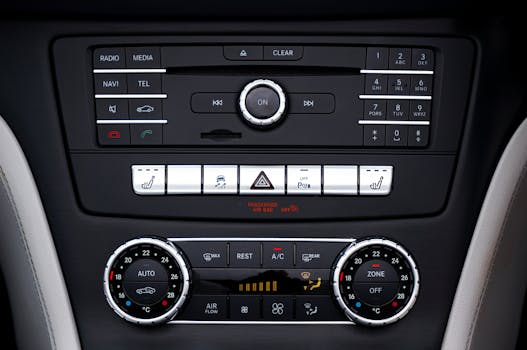Neuralink-Controlled Vehicles: Brain Interfaces in Automotive Tech.
The world of automotive technology has always been at the forefront of innovation and advancements. From electric and self-driving cars to smart traffic systems, the industry has come a long way in delivering a more efficient, safe, and convenient driving experience. However, with the latest breakthrough in technology, the automotive industry is about to be revolutionized once again – the integration of Neuralink-controlled vehicles. In this article, we’ll dive deeper into this emerging technology and its potential impact on the automotive industry, as well as the concerns and controversies surrounding it.
The Rise of Neuralink-Controlled Vehicles
Neuralink, a neurotechnology company founded by billionaire entrepreneur Elon Musk, has been making waves with its ambitious goal of creating a symbiotic relationship between humans and artificial intelligence (AI). The company’s groundbreaking technology involves implanting tiny electrode threads into the brain to create a high-bandwidth brain-machine interface (BMI). This interface will allow individuals to control machines, such as computers and smartphones, with their thoughts.
While this may sound like something out of a sci-fi movie, Neuralink has already demonstrated the potential of its technology by successfully implanting its device into the brains of pigs and controlling their movements using a smartphone app. And now, the company has set its sights on another major milestone – applying its technology to the automotive industry.
The Promise of Brain Interfaces in Automotive Tech
The integration of Neuralink’s BMI into vehicles has the potential to transform the driving experience in ways never thought possible. The concept involves connecting the driver’s brain directly to the car’s system, allowing them to control certain functions of the vehicle with their thoughts.
Enhanced Safety
The most significant benefit of incorporating Neuralink’s technology into vehicles is the enhanced safety it can offer. By eliminating the need to use hands and feet to control the car, the risk of distracted driving and human errors, such as pressing the wrong pedal, can be greatly reduced. This technology can also be a game-changer for individuals with disabilities, providing them with more independence and freedom behind the wheel.
Improved Comfort and Convenience
Aside from safety, brain interface technology can also provide a more comfortable and convenient driving experience. With the ability to control various functions just by thinking, drivers can now focus more on the road and their surroundings, rather than fumbling with buttons and knobs. This can be especially useful during long drives, where drivers can simply relax and let their brain control the music, temperature, and even the navigation system.
Efficiency and Performance
In addition to safety and convenience, Neuralink’s technology can also greatly improve the efficiency and performance of vehicles. By directly accessing the driver’s brain, the car can anticipate their actions and respond faster, resulting in smoother driving and better fuel efficiency. This technology can also be applied to self-driving vehicles, where the car can read the driver’s mind and adjust its route or speed accordingly.
The Controversy Surrounding Neuralink-Controlled Vehicles
As with any emerging technology, there are concerns and controversies surrounding the integration of brain interfaces in automotive tech.
Privacy and Security
One of the main concerns is privacy and security. With the ability to read and control the driver’s thoughts, there is a potential for hackers or unauthorized individuals to gain access to personal information and even control the vehicle. To address this, Neuralink has emphasized the security measures in place, such as encryption and user authentication, to protect the confidentiality of the data transmitted between the brain and the car.
Moral and Ethical Considerations
Another issue that arises is the moral and ethical implications of such technology. The thought of directly connecting our brains to machines raises questions about the integration of technology into our bodies and the potential loss of autonomy. Some also argue that this technology may widen the gap between the wealthy and the less fortunate, as it can only be afforded by the privileged few.
Regulation and Acceptance
As with any groundbreaking technology, integrating brain interfaces into vehicles will also face challenges in terms of regulation and acceptance from society. It is unclear how governments and regulatory bodies will approach this technology, and it may take some time for the public to fully embrace this new way of driving.
The Road Ahead for Brain Interfaces in Automotive Tech
The integration of Neuralink’s BMI technology into vehicles is still in its early stages, but its potential impact on the automotive industry is immense. However, many uncertainties and challenges lie ahead, and much research and development are needed before it can become a reality for everyday consumers. As with any technology, there are risks and concerns, but there is also the promise of creating a safer, more efficient, and convenient driving experience for all. The future of automotive tech is definitely an exciting one, and it will be interesting to see how Neuralink’s brain interfaces will shape the way we drive in the years to come.









